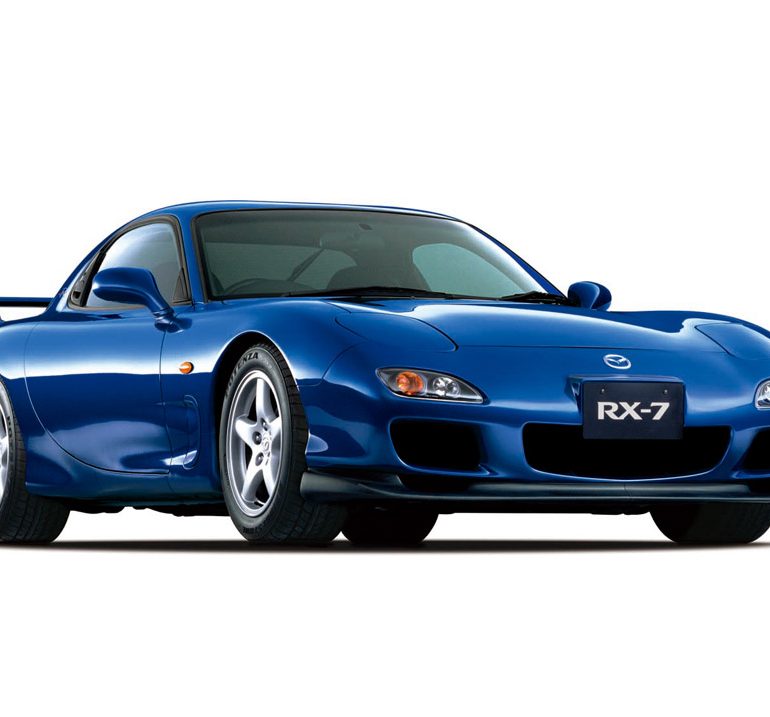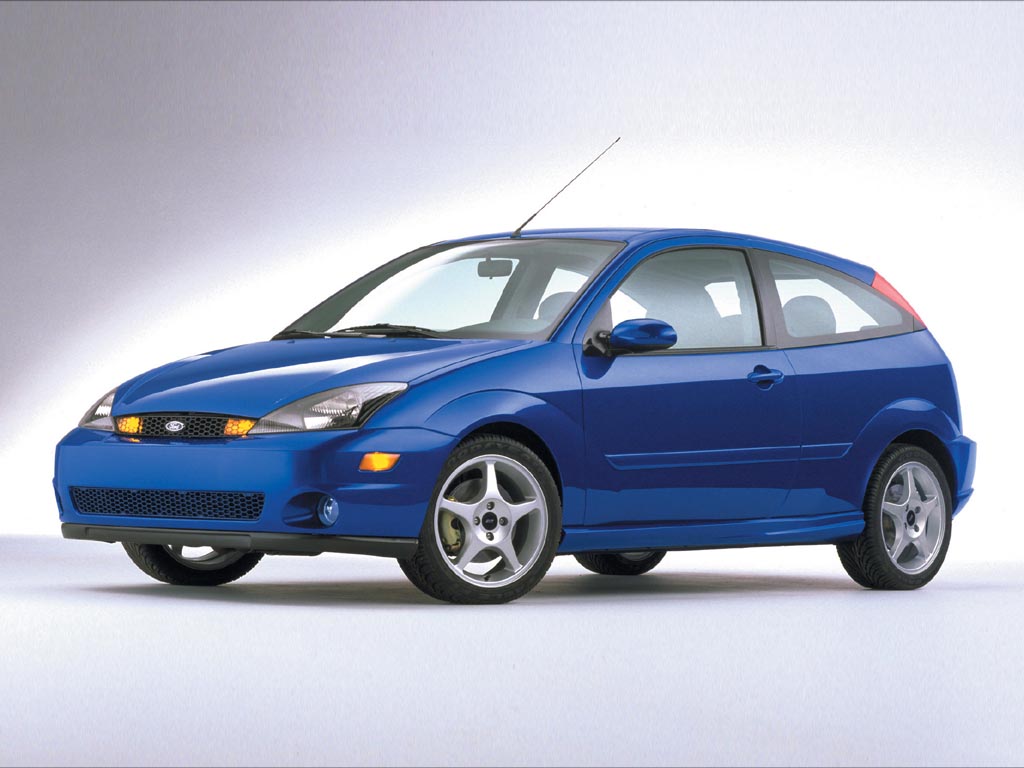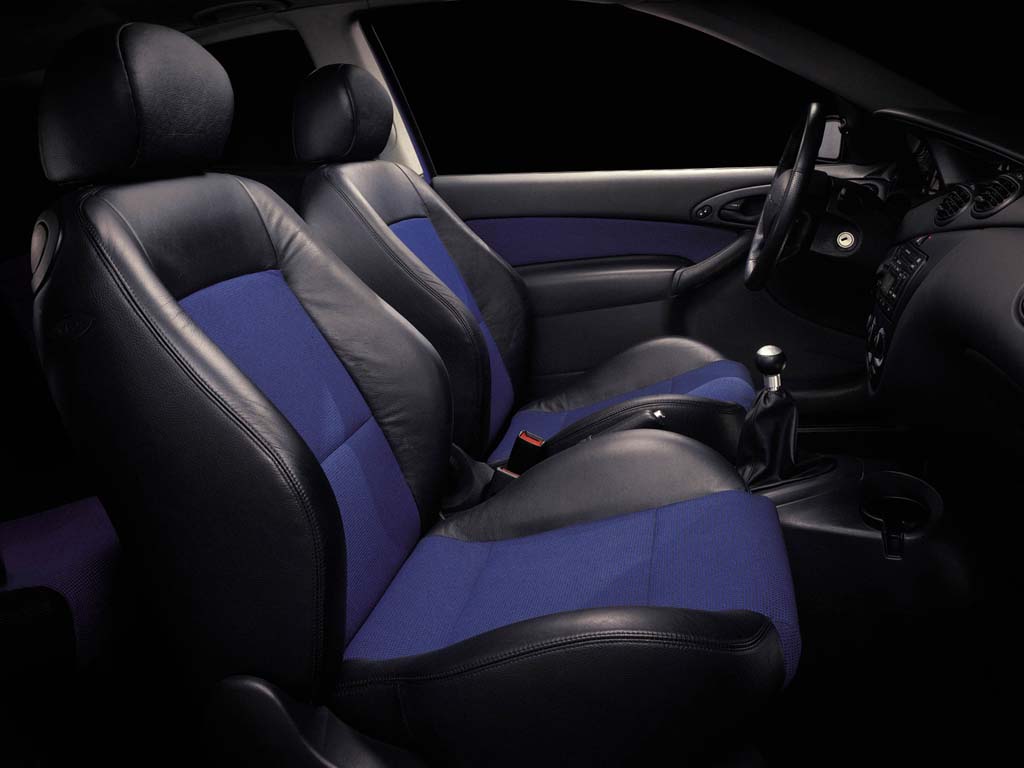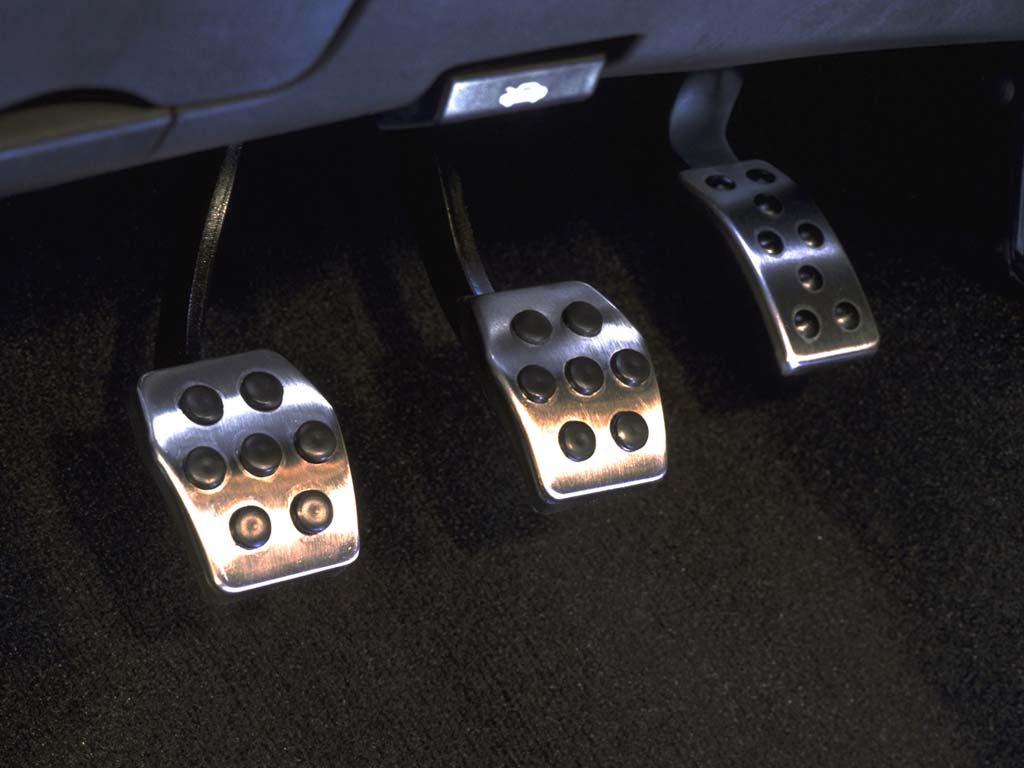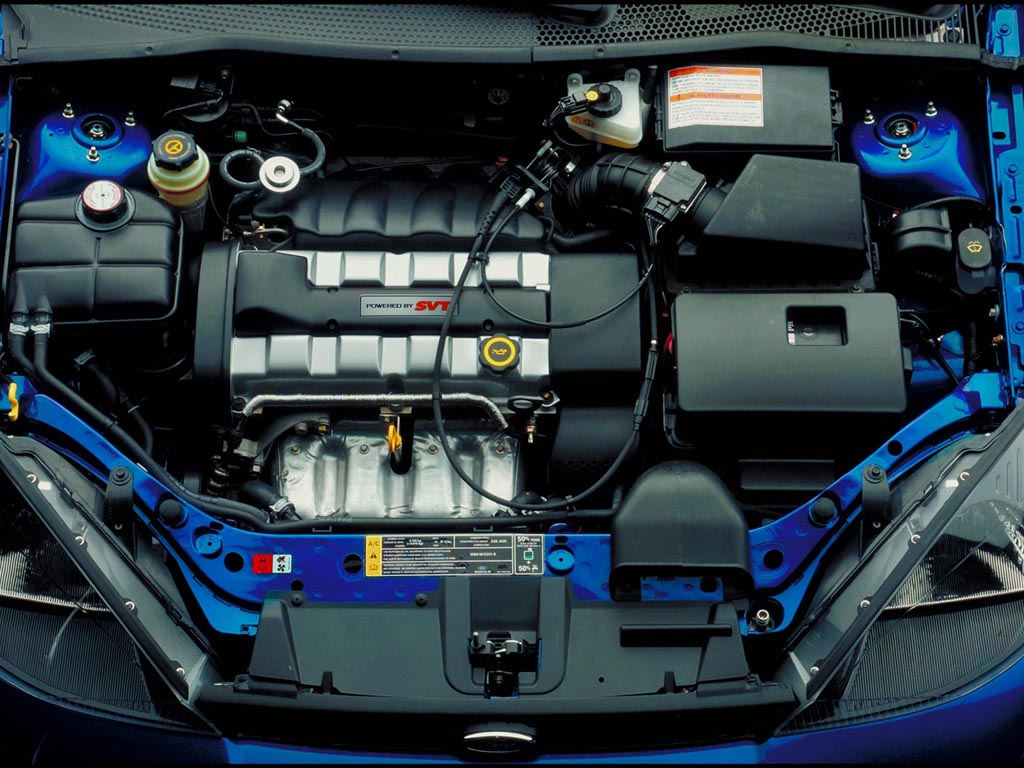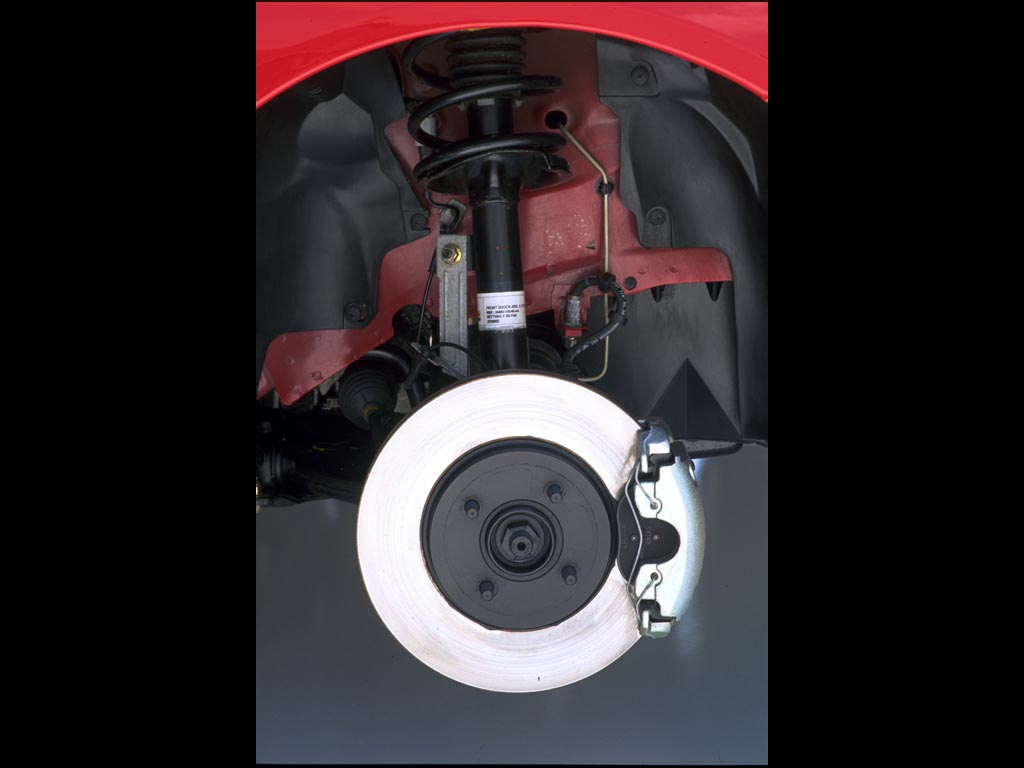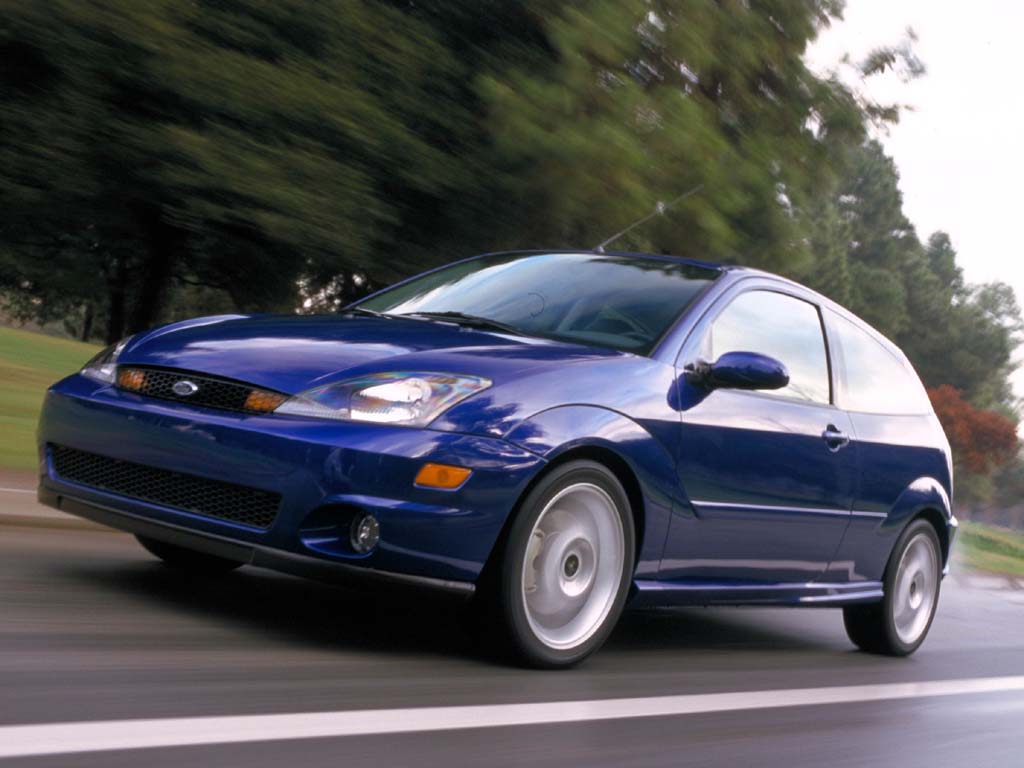2002 Ford Focus SVT
Modifications to the SVT Focus exterior include 17-inch, five-spoke wheels, unique front and rear fascias with honeycomb grilles, distinctive rocker moldings, and a small spoiler on the top of the hatch.
Interior elements unique to the SVT Focus include pedals with metallic covers placed to facilitate heel-and-toe downshifting; a black leather-wrapped steering wheel with perforations in the three- and nine-o’clock grip positions; a black leather-wrapped parking brake lever with a satin aluminum release button; and a black leather-wrapped aluminum shift knob.
The SVT Focus powertrain starts with a 2.0-liter Zetec Ford engine. In standard Focus models it produces 130 hp at 5,300 rpm and 135 foot-pounds of torque at 4,500 rpm. This engine’s cast-iron block already has the strength, rigidity and durability necessary for the increased power SVT engineers were developing. The SVT Focus engine has 170 horsepower and 145 foot-pounds of torque.
Component changes in the block include new forged-steel connecting rods with 20mm wrist pins and lightweight, cast-aluminum pistons. The new pistons increase compression from the Zetec’s 9.6:1 ratio to 10.2:1 in the SVT Focus.
The aluminum cylinder head has enlarged intake ports for increased flow. The intake valves measure 33.5mm in diameter, 1.5mm larger than those in a standard Zetec.
The intake camshaft is equipped with an electro-mechanical control mechanism, which allows the cam’s maximum opening point, relative to crankshaft degrees, to be varied between 85 and 145 degrees after top-dead-center on the intake stroke. The variability is dependent on engine speed and load, and is accomplished by changing oil pressure on either side of a piston in a helix between the cam and its drive pulley.
The other significant contributor to low-speed torque is the SVT Focus’ dual-stage intake manifold. This device is designed to direct the intake air through four long runners below 6,000 rpm. Above 6,000 rpm, the manifold switches position to shorten the runners’ length, which improves peak power output.
The standard six-speed manual transaxle was developed by the German manufacturer, Getragª. This unit’s innovative design incorporates an input shaft flanked by two layshafts, and each layshaft has its own set of final drive gears. Layshaft number one carries first, second, fifth and sixth gears, and a 2.88:1 final drive ratio, while layshaft number two carries third, fourth, reverse, and a 4.25:1 final drive ratio. All six forward gears, plus reverse, are fully synchronized.
This design gives the SVT Focus the performance advantages of a close-ratio, six-speed gearbox in a remarkably compact and lightweight package. Dividing the output shaft into two allows the transaxle to be much shorter than a conventional single shaft six-speed, thus occupying the same space as the ZX3’s 5-speed gearbox.
For a controlled yet compliant suspension, SVT engineers selected springs that are stiffer by 10 percent on the front and 20 percent on the rear, compared with those on the Focus ZX3. Spring rates on the SVT Focus are 129 lb./in. on the front and 157 lb./in. for the rear.
There are solid stabilizer bars front and rear, with a diameter of 21mm for both. The front bar is one millimeter larger in diameter than the one on the Focus ZX3. The shock absorbers have been retuned for agile handling, with softened impact harshness and improved roll damping.
The car’s impressive braking capabilities are the result of increased swept area under the 17-inch wheels. The 300mm (11.8-inches vented front rotors are 42mm (1.65 inches) larger in diameter than those on the ZX3, but use the same single-piston caliper positioned to take advantage of the increased diameter rotor. These brakes are specially made for the SVT Focus and require a special steering knuckle.
2002 Ford Focus SVT Gallery
In Detail
| submitted by | Richard Owen |
| built at | Detroit, Michigan, USA |
| price $ | $18 000 USD |
| engine | Zetec Inline-4 |
| valvetrain | DOHC 4 Valves / Cyl with Variable Valve Timing |
| displacement | 1988 cc / 121.3 in³ |
| bore | 84.8 mm / 3.34 in |
| stroke | 88 mm / 3.46 in |
| compression | 10.2:1 |
| power | 126.8 kw / 170.0 bhp @ 7000 rpm |
| specific output | 85.51 bhp per litre |
| bhp/weight | bhp per tonne |
| torque | 196.59 nm / 145.0 ft lbs @ 4500 rpm |
| redline | 7300 |
| driven wheels | Front Engine / FWD |
| front tires | 215/45ZR-17 |
| rear tires | 215/45ZR-17 |
| front brakes | Vented Discs w/ABS |
| f brake size | x 300 mm / x 11.8 in |
| r brake size | x 280 mm / x 11.0 in |
| front wheels | F 43.2 x 17.8 cm / 17.0 x 7.0 in |
| rear wheels | R 43.2 x 17.8 cm / 17.0 x 7.0 in |
| steering | Rack & Pinion w/Power Assist |
| curb weight | 1256 kg / 2769 lbs |
| wheelbase | 2615 mm / 103.0 in |
| front track | 1494 mm / 58.8 in |
| rear track | 1486 mm / 58.5 in |
| length | 4270 mm / 168.1 in |
| width | 1699 mm / 66.9 in |
| height | 1430 mm / 56.3 in |
| transmission | Getrag 6-Speed Manual |
| gear ratios | :1 |
| final drive | 2.88:1 |
Story by Ford


